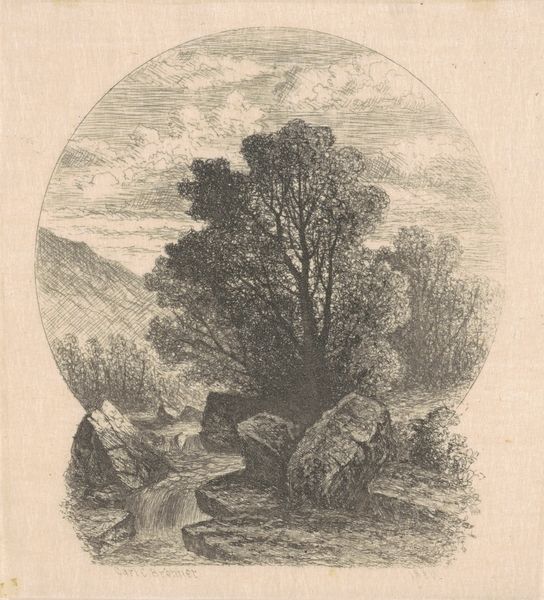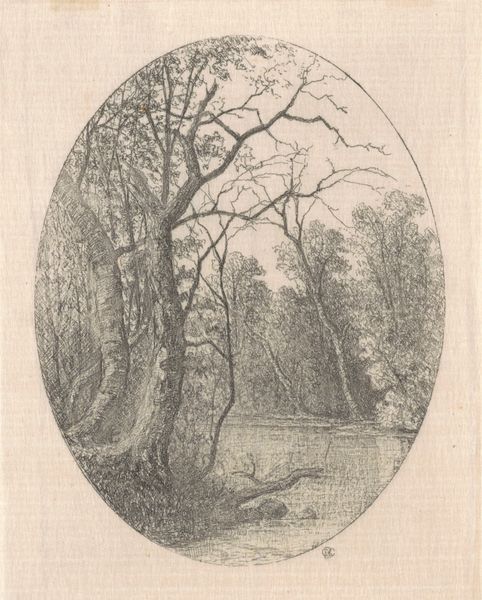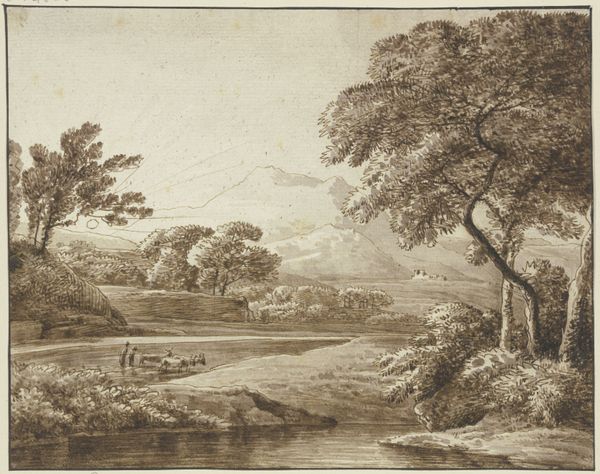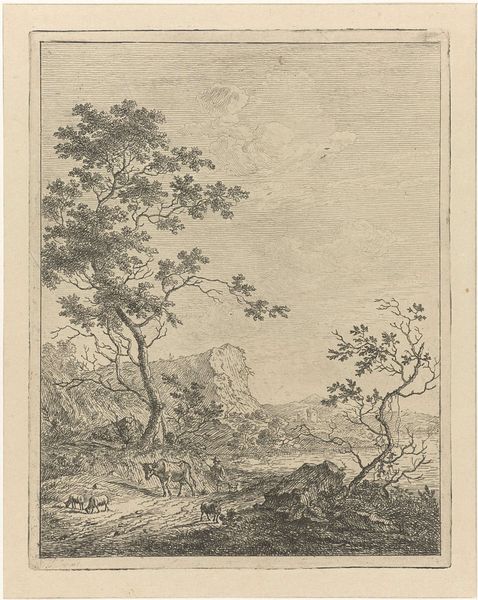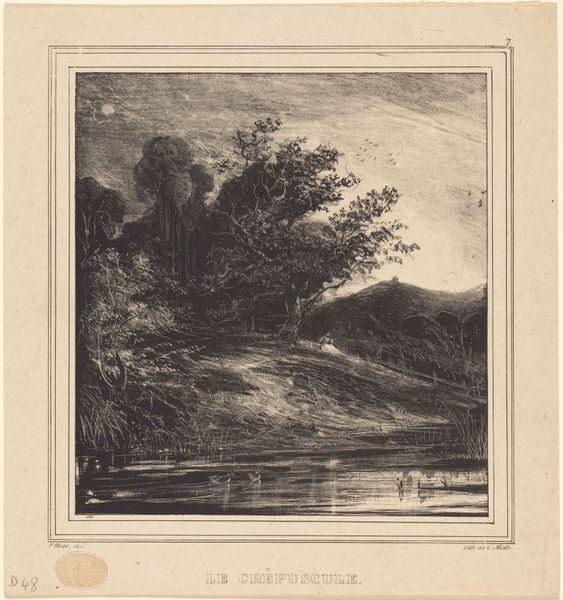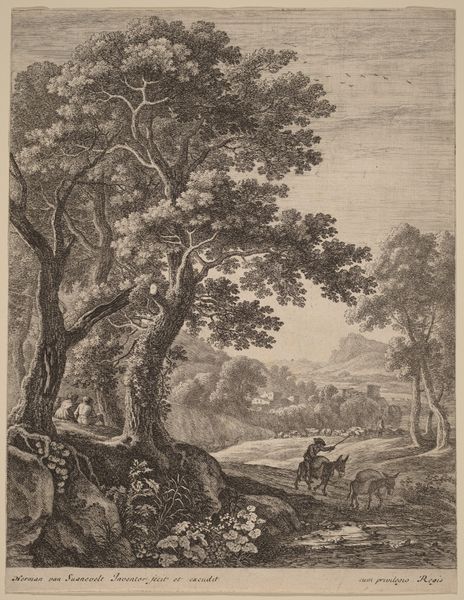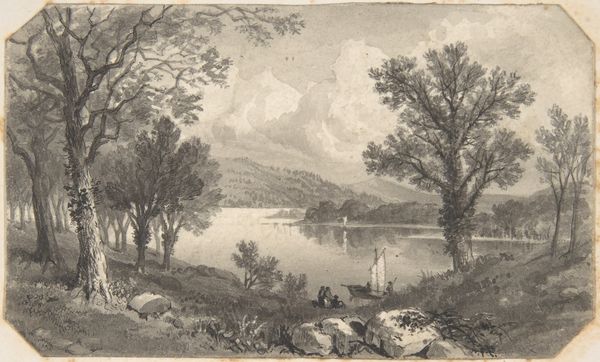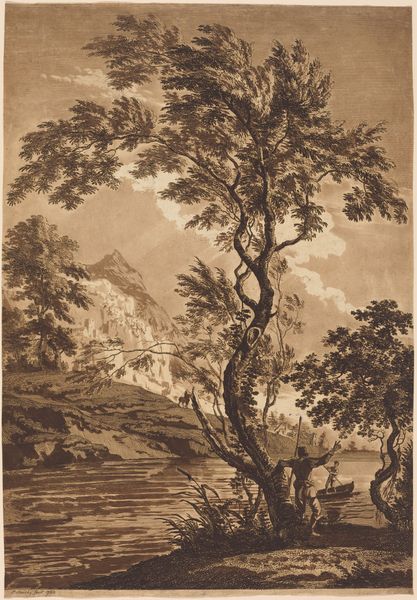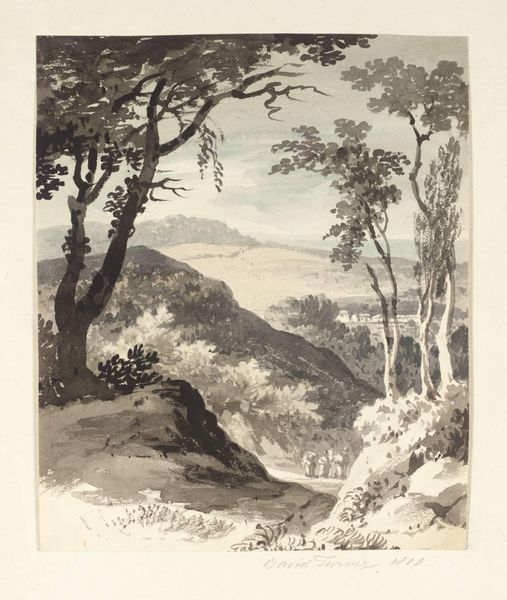
Dimensions: image (irregular): 8.73 × 6.67 cm (3 7/16 × 2 5/8 in.) sheet: 9.84 × 7.94 cm (3 7/8 × 3 1/8 in.) support: 30.48 × 24.13 cm (12 × 9 1/2 in.)
Copyright: National Gallery of Art: CC0 1.0
Editor: This is "On Green River" by Carl C. Brenner, probably made in the 1870s or 80s, using pencil, and maybe even as a print. I'm struck by the quiet mood, and the oval frame seems to isolate this little natural world. What do you see in this piece, Professor? Curator: What strikes me is how this idyllic scene, so carefully rendered, exists within a period of immense upheaval in American society. Reconstruction was collapsing, racial tensions were escalating, and industrialization was transforming the landscape. Brenner’s choice to depict this serene, untouched nature raises questions for me. Is it an escape? A commentary on what was being lost? What does nature mean when it is a privileged escape available only to some? Editor: So, you're thinking about what it leaves out as much as what it includes? The drawing is so delicate. Does that contribute to your interpretation? Curator: Absolutely. The meticulous detail speaks to a yearning for something permanent amidst change. But let’s think about the Green River itself. Who had access to it? Whose labor might have been exploited nearby? What stories, likely erased, are not depicted in this pretty landscape? Considering these omissions reframes our understanding. The artist doesn't offer us a gritty reality; he's offering us a carefully constructed…silence. Editor: That's powerful. I hadn’t thought about what's intentionally absent. So, the very act of creating such a peaceful image can be a political statement? Curator: Exactly. By understanding the historical and social context, we can start to unpack the complex layers of meaning embedded within even the most seemingly simple landscapes. This is a dialogue; it requires us to actively interrogate what we see – and what we don't. Editor: I see it now. Thinking about the social conditions really opens up a whole new perspective on Brenner’s choices. Thanks, Professor.
Comments
No comments
Be the first to comment and join the conversation on the ultimate creative platform.
